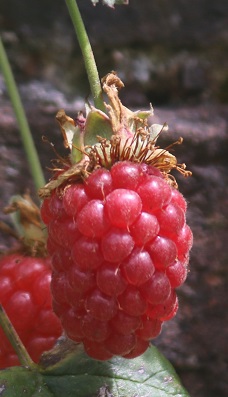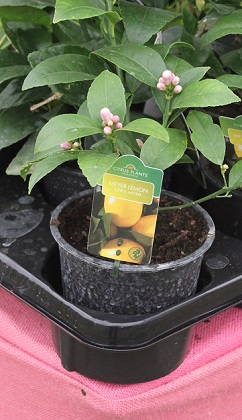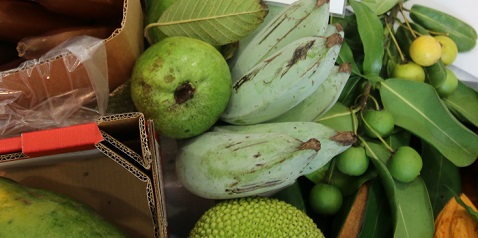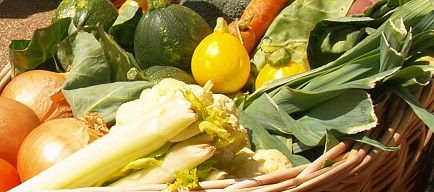Become Better with Plants in Permaculture
 Permaculture is all about creating a sustainable, yet productive landscape. To do this, you need to understand the many different species of plants that grow in that landscape, and how they interact with each other and the rest of their environment.
Permaculture is all about creating a sustainable, yet productive landscape. To do this, you need to understand the many different species of plants that grow in that landscape, and how they interact with each other and the rest of their environment.
No matter what your level of plant knowledge is when you start this course; you have a very real opportunity to significantly improve that plant knowledge by doing this course.
Course Content and Structure
There are ten lessons in this course
- Permaculture Gardens - Different Garden Systems
- Design - Planning techniques and skills
- Garden Zones
- Design for Natural Pest, Disease and Weed Control
- Companion Planting
- Appropriate Technology in Permaculture Design
- Water Garden
- Fruit Garden
- Herb and Vegetable Garden
- Mandala Garden
Course Duration - 100 hours of self paced study
Learn to Achieve Planting Success by
- Choosing the right plant for the right place
- Growing it using appropriate technologies
LEARN TO USE TREES APPROPRIATELY
 If space allows, every permaculture landscape should have an orchard. On large properties, this can be a large orchard, providing lots of different fruits, nits, and other produce. On a small property, such as a suburban backyard, the size of an orchard may be much smaller. In "micro landscapes" it may still be possible to produce some tree fruits; but you may need to be creative in how you do it (eg. using dwarf tree cultivars or growing trees as an espalier).
If space allows, every permaculture landscape should have an orchard. On large properties, this can be a large orchard, providing lots of different fruits, nits, and other produce. On a small property, such as a suburban backyard, the size of an orchard may be much smaller. In "micro landscapes" it may still be possible to produce some tree fruits; but you may need to be creative in how you do it (eg. using dwarf tree cultivars or growing trees as an espalier).
One of the first considerations are the legumes for nitrogen fixing. Legumes to consider include: white clover, lab-lab, lucerne, wattles, albizia, plus many others. Place them to also function as windbreaks. If planting on a slope, plant along the contours.
Always remember that the soil is the most important resource you have. If you condition it the best you can, it will provide you with an abundance of fruit over many years. Conditioning may include opening clay (with products such as gypsum or just relying on plant's roots), or it may involve the addition of organic matter.
Planning the Intercrop Species
Orchards should be made up of disease resistant crops, possibly windbreaks and a range of complimentary trees to provide pest control or bee attracting. Additionally, the understorey could utilise a green manure crop; nitrogen fixing plants; forage for animals; act as insect repellents; or could be used to grow a vegetable crop.
- Use nitrogen fixing plants.
- Use marigold to control eelworms/nematodes.
- Reduce grass by using flowering plants, ground covers, etc. which also attract bees.
- Incorporate ponds and protection for frog and lizard populations to control insects.
- Mulch heavily to cool the soil and prevent drying out.
To reduce pest populations:
- Select disease resistant plant material
- Attract predatory insects and animals into the property
- Interplant with legume trees and small plants
- Remove grass and substitute with mulch or similar
- Incorporate foraging animals like poultry or pigs to eat fallen fruit and deposit manure.
- Remove infected fruit or plant material
Your Approach to Orchards should Depend on the Local Conditions
Tropic Orchards
In tropical districts where rainfall is plentiful a mix of tall legume trees, bananas, fruit trees, pawpaws, arrowroot, cassava, sweet potato and comfrey may be planted on loosened soils and in mulched swales. Large fruit bearing trees should be spaced at least every 8-10 metres with smaller species (citrus, tamarillo, etc.) interplanted with coconuts. Smaller shrubs are planted in existing gaps.
Ideally the aim is to completely cover the ground in the first 18-24 months with mulch and plants such as nasturtiums, lab lab beans, clover, pigeon pea, or any non-grass mix suitable to the district.
It is better to occupy a smaller property and have it heavily covered than to have a large property which is scattered with trees and herbs. Much of the small vegetation is used as mulch and nutrient, and should be thickly applied to suppress grass.
To control existing weedy shrubs such as lantana, grow vigorous climbers such as yams, passionfruit or chokos. These will eventually smother the weeds and provide support to the climbers.
In time the tropical permaculture orchard will develop to be self-sustaining. Understorey plants may need to be added as the trees and palms grow tall. Ensure the soil is replenished with nutrients with the use of green manures, mulch of organic fertilisers.

Dryland Orchards
Trees to use in dryland orchards include: date palms, jujube, pistachio, white cedar, tamarisk, chestnut, carob, tagasaste, paulownia, fig and mulberries. Others worth considering include: stone fruit, pomegranate, olives, almonds and edible cactus.
Plants are not heavily planted close together due to lack of water. Mulch once again, is of prime importance. Drip irrigation may also need to be considered.
If organic mulch is not available, then inorganic mulch may be use. Stones and rubble act as mulch and benefit plants by:
- Protecting and shading roots during heat of day
- Providing warmth at night-time
- Preventing animal damage to roots
- Preventing wind lifting roots
- Providing shelter for small soil borne organisms such as earthworms
- Assisting in water condensation during the coolness of night
The most successful dryland tree-planting strategy is to plant on the edges of swales. All water that comes onto the property should be directed into the swales (e.g. rainwater downpipes from the house, driveway gutter systems, etc.
To assist in the success of a dryland orchard consider the following:
- Suitable species to the local climate
- Select health plants before planting
- Plant during the rainy season to improve success rate
- Plant specimens in a group but not too close otherwise competition may result
- Install drip irrigation systems
- Water deeply rather than frequent light irrigations
- Construct wells/basins around trees in order to hold more water
- Replace grass with other suitable plants
- Consider use of shading, wind protection, fencing, etc.

Who Should Do this Course?
- Professional Development for Planners, Architects, Horticulture or Agriculture professionals
- Permaculture Designers and Consultants
- Farmers and Hobby Farmers
- Garden Designers
- Gardeners and Landscape Professionals
- Environmental managers
- Anyone with a passion for the Environment, Sustainability or Permaculture